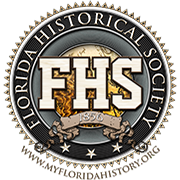Cocoa’s Rosenwald School
The building that houses the Leon and Jewel Collins of African American History and Culture in Cocoa was constructed between 1922 and 1923 as part of the Rosenwald School project and opened as the Cocoa School, serving African American students. Noted educator and civil rights activist Harry T. Moore began teaching there in 1925.
Originally a four-teacher school, the Cocoa School (also known as Cocoa Junior High School) was expanded between 1923 and 1924 to be a five-teacher school and expanded again between 1928 and 1929 to accommodate seven teachers.
Monroe High School
This structure became Monroe High School in 1947 when it began to serve African American students in grades 10 through 12. The school was renamed in honor of Mrs. Jessie Ruth Monroe, former principal of Cocoa Junior High School. In 1954, Monroe High School moved to a new, larger facility just down the street. Monroe High School closed in 1968 when nearby Cocoa High School was desegregated in response to the Brown v. Board of Education U.S. Supreme Court decision that called for the integration of public schools.
Julius Rosenwald and Booker T. Washington
Between 1913 and 1932, The Rosenwald Fund constructed more than 5,000 schools for Black children across the South. The schools became known as Rosenwald Schools. They were the result of a collaboration between American-born Jewish philanthropist Julius Rosenwald, a part-owner of Sears, Roebuck and Company, and Black educator Booker T. Washington of the Tuskegee Institute.
Julius Rosenwald met Booker T. Washington in 1911 when he joined the Board of Directors and became a trustee of the Tuskegee Institute. Washington encouraged Rosenwald to invest in education. In 1912, Washington wrote to his friend Rosenwald, “Many of the places in the South where the schools are now taught are as bad as stables.” The two decided to work together to improve black education.
The Architecture of Rosenwald Schools
Tuskegee Institute architects developed the plans for most of the Rosenwald Schools. Some were even built by Tuskegee students. Most of the Rosenwald Schools looked very similar. They were typically one story and built of wood with wood siding. A few of the schools were made of brick. All Rosenwald Schools had large, tall windows positioned very closely together to allow fresh air and plentiful light into the school without casting shadows. The site plans for Rosenwald Schools required them to be built to align with the movement of the sun. Very few of the schools had electricity.
The purpose of Rosenwald Schools was to address the poor state of African American education in the United States. By 1928, one-third of the rural black school children and teachers located in the South attended Rosenwald Schools. Booker T. Washington died in 1915, and Julius Rosenwald died in 1932. The Rosenwald Fund lived on and continued to sponsor educational projects in the 1930s and 1940s. The Fund officially closed for good in 1948, but many of the schools continued to stay open. Before their end, the schools employed more than 14,000 teachers and served more than 600,000 Black children.
The End of Rosenwald Schools
Rosenwald Schools became obsolete in 1954 when the Supreme Court ruled in the landmark case Brown v. Board of Education that educational segregation was unconstitutional. As a result, many of the Rosenwald Schools were abandoned or demolished. It is estimated that only 10 percent of the buildings once used to house Rosenwald Schools survive today.
There were once 126 Rosenwald Schools in Florida. The building that houses the Leon and Jewel Collins Museum of African American History and Culture is one of only a few Rosenwald Schools that still exist in the state.



